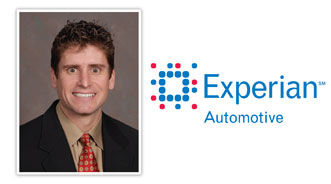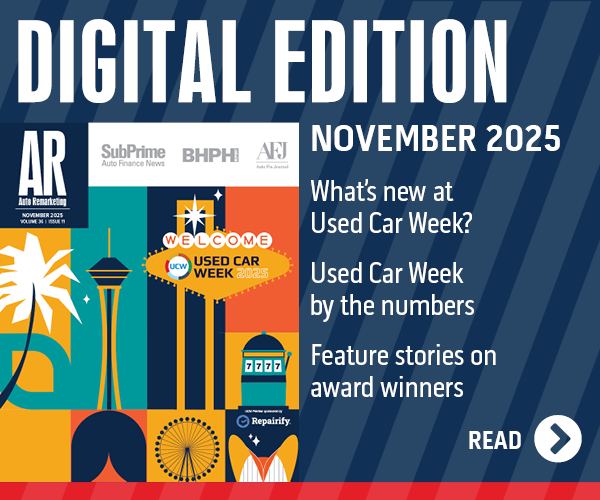Experian Explains Why BMW Dealers Enjoy Strongest Loyalty

By subscribing, you agree to receive communications from Auto Remarketing and our partners in accordance with our Privacy Policy. We may share your information with select partners and sponsors who may contact you about their products and services. You may unsubscribe at any time.
SCHAUMBURG, Ill. –
Experian Automotive wanted to offer more information pertinent to dealers beyond the brand loyalty trends it tracks on a quarterly basis. So this week, Experian combined its analysis of both brand loyalty and dealer loyalty, resulting in some interesting findings.
For calendar year 2010, Experian discovered dealer loyalty — buyers returning to market and purchasing a vehicle from the same rooftop as they had previously — settled at about 31 percent on average.
Several nameplates watched their dealers perform above that level. Experian specifically noted how BMW, Toyota, Lexus, Honda, Ford and Chrysler all fell into this category.
However, when combined with brand loyalty — what Experian defines as buyers coming back and purchasing the same nameplate — Experian found that BMW by far had the best performance when those two metrics intersected.
Both BMW’s brand and dealer loyalty approached 40 percent, according to Jeffrey Anderson, Experian’s director of consulting and analytics who presented these findings and more during a Webinar earlier this week.
“If you’re returning to market and buying another BMW, you’re very likely to return to that same dealer,” Anderson surmised. “That’s a very strong story for BMW. Dealers must be doing a very good job at customer retention and treatment.”
Subscribe to Auto Remarketing to stay informed and stay ahead.
By subscribing, you agree to receive communications from Auto Remarketing and our partners in accordance with our Privacy Policy. We may share your information with select partners and sponsors who may contact you about their products and services. You may unsubscribe at any time.
In comparison, Anderson pointed out the differences between brand and dealer loyalty levels for Ford, Toyota, Honda and Hyundai. While each of those nameplates had brand loyalty levels during 2010 of 50 percent or higher, their dealer loyalty readings were far lower with Hyundai’s settling at near 25 percent.
Anderson acknowledged that transient population trends could skew the reading somewhat, but he added that “clearly there is some opportunity there for Hyundai to increase some dealer loyalty, and subsequently, have an impact on corporate loyalty.”
More Drivers of Brand Loyalty
While a dealer’s service and support can be a critical element in maintaining loyalty, Experian touched on which specific models drove the most brand loyalty during the first quarter of 2011.
Among the Top 10 Experian highlighted, six are Fords, including the Fiesta, Fusion, Flex, Edge, Five Hundred and Escape. Topping the chart was the Chevrolet Cruze with the Kia Forte and Soul also being included on the list.
Anderson shared the first-quarter sales of new-vehicle entries such as the Cruze were higher than normal, representing about 140,000 additional units.
“That represents just over 4 percent of all Q1 sales, and that’s quite an increase of prior quarters where these new vehicle sales represented maybe 2 or 2.5 percent of sales,” Anderson calculated.
“These vehicles are doing a great job of pulling recent buyers of these vehicles back into those brands and helping to retain loyalty,” he added.
Thanks to having six of the Top 10 models, Experian determined Ford had the highest brand loyalty during the first quarter of this year, coming in at 46.5 percent.
Helping to push Hyundai’s overall corporate loyalty higher in that span was Kia’s brand loyalty reading of 43.6 percent, which Experian said was slightly higher than both Honda and Toyota that had brand loyalty marks of 43.1 percent.
Orphaned Brand Importance to OEMs
Another new piece of data Experian rolled out this week stemmed from its analysis going back to the fourth quarter of last year. That’s when the firm watched General Motors’ corporate loyalty “skyrocket” thanks to heavy incentives.
Turns out, Anderson determined many of those fourth-quarter sales were attributed to Pontiac and Saturn owners trading in their vehicles and purchasing a unit GM still manufacturers, a Chevrolet, GMC, Buick or Cadillac.
Anderson showed how corporate loyalty growth for Pontiac and Saturn mirrored GM’s trend to close out last year as Pontiac climbed from about 40 percent to almost 50 percent, while Saturn edged up from 25 percent to almost 34 percent.
Moving forward in time to the first quarter of this year and Experian witnessed Pontiac and Saturn corporate loyalty slide back toward levels seen during the middle of last year.
“It’s really important for GM to keep these brand owners loyal because just in Q1 alone, there were more Pontiac owners returning to market than current Buick or Cadillac owners,” Anderson indicated.
“The impact of keeping these Pontiac owners loyal is more important right now than Buick or Cadillac owners to keep those incremental units going higher,” he continued.
Experian also is keeping tabs on another orphaned domestic nameplate — Mercury.
“We’ll see if Ford can do the same thing with Mercury owners because over the last three quarters we’ve seen their loyalty drop from over 50 percent down to the mid-40s,” Anderson shared.
What Does Corporate Loyalty Mean to Automaker Revenue?
Experian attempted to find an answer to this question by comparing data from the first quarter of 2010 and 2011.
Anderson computed that GM’s year-over-year corporate loyal gain generated 18,971 new registrations. He also noted that corporate loyalty drops seen by Ford and Toyota during that same time comparison meant 10,172 fewer registrations for Ford and 11,260 fewer registrations for Toyota.
Anderson began by telling dealers, “Let’s do some quick, back-of-the-envelope type of math. Say for General Motors or Toyota revenue per vehicle is $30,000 — you can make up whatever number — but let’s say $30,000. For General Motors, that equates to over $500 million in incremental revenue. Or for Toyota, it represents about $340 million in lost revenue.
“It makes the math very interesting when you’re tracking just that small incremental change in corporate loyalty and the resulting impact in actual units,” Anderson went on to say.
“Again, when we’re tracking all of the activity in the marketplace, this is the type of metrics we’re able to get fairly precise,” he added, while also mentioning that Experian’s database includes records of more than 650 million units.
Other Noteworthy Q1 Trends
Experian also highlighted several other points during the Webinar:
—The average age of vehicles currently in operation increased slightly during the first quarter to 10.7 years. Experian noted 79.7 percent of the more than 242 million units currently on the road are 15 years old or less.
—Among vehicles in operation, GM is the OEM with the greatest share at 28.3 percent, followed by Ford (19.8 percent), Chrysler (12.8 percent), Toyota (11.9 percent), Honda (8.2 percent), Nissan (5.3 percent) and Hyundai (3.0 percent).
—Looking year-over-year, new-vehicle registrations moved almost 15 percent higher during the first quarter, jumping by more than 407,000 units, continuing a trend that’s been going since early last year. First-quarter used-vehicle registrations were nearly identical to the same period a year ago. Experian indicated the most recent jump in used registrations came in the fourth quarter of last year when they rose 8.7 percent year-over-year.
—New models that posted the most year-over-year registration spikes in the first quarter included Hyundai Elantra, Volkswagen Jetta, Honda CR-V, Ford Explorer and Nissan Sentra. Experian determined the Elantra was up more than 22,000 units, while the CR-V and Explorer each climbed by more than 17,000 units.
—While Experian indicated hybrid units still represent just 0.80 percent of vehicles currently in operation, analysts discovered these owners are loyal to that particular unit. Experian found 44.1 percent of consumers who disposed of a hybrid during the first quarter purchased another hybrid.


